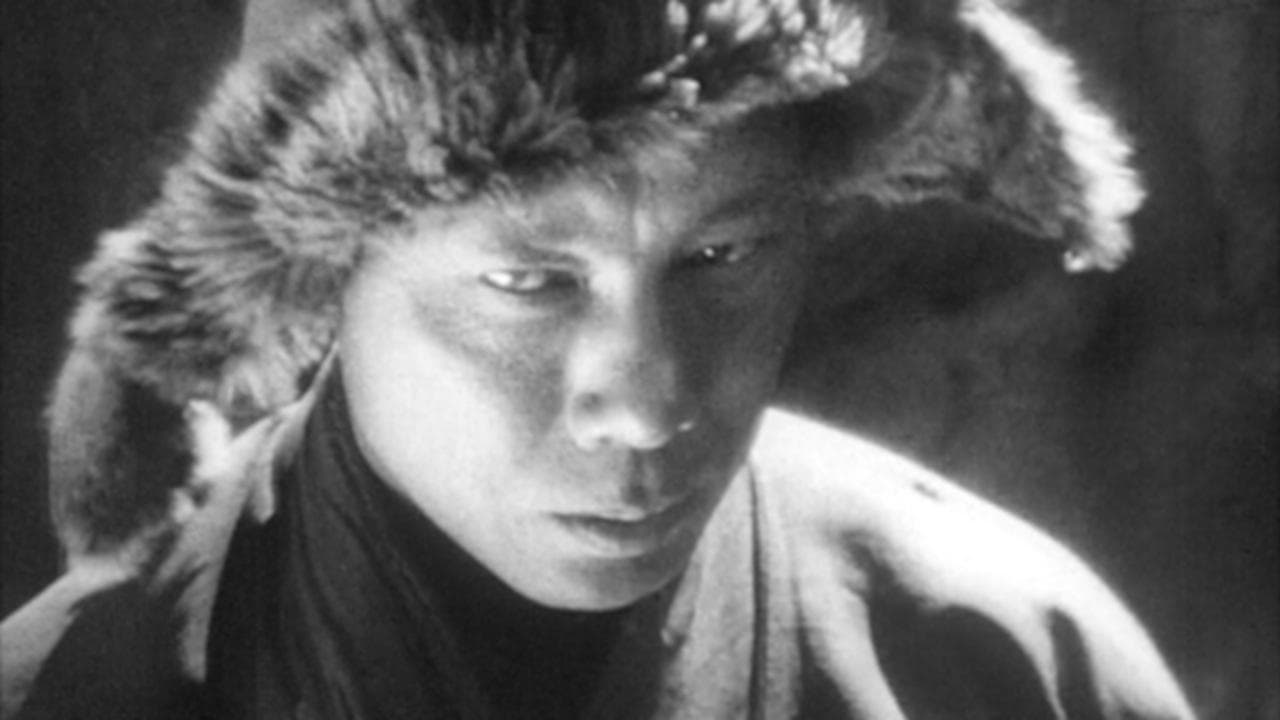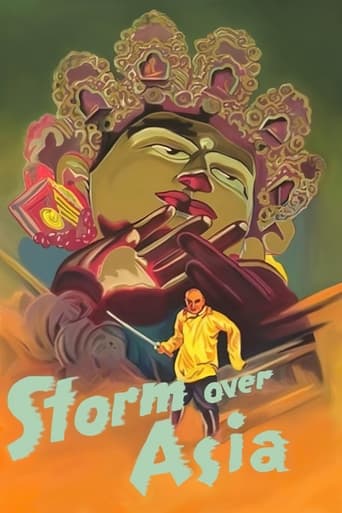



It's a feast for the eyes. But what really makes this dramedy work is the acting.
View MoreThe plot isn't so bad, but the pace of storytelling is too slow which makes people bored. Certain moments are so obvious and unnecessary for the main plot. I would've fast-forwarded those moments if it was an online streaming. The ending looks like implying a sequel, not sure if this movie will get one
View MoreThis film is so real. It treats its characters with so much care and sensitivity.
View MoreAll of these films share one commonality, that being a kind of emotional center that humanizes a cast of monsters.
View MoreThis Russian silent film from I found in the book 1001 Movies You Must See Before You Die, I didn't know anything about the plot or what it would involve, but I was hoping it would worthy of its place in the book. Basically it is set in 1918, where Bair, the young and simple Mongol Huntsman, herdsman and trapper (Valéry Inkijinoff) is cheated out a valuable fox fur that he tries to sell to unscrupulous European capitalist fur trader Henry Hughes (Viktor Tsoppi). Bair gets into a brawl with the trader after cheating him, this brawl becomes much bigger with more people involved and he is ostracised from the trading post, so he is forced into escaping to the hills. By the year 1920, Bair becomes a Soviet partisan, and he becomes involved in the fight for the Soviets against the British army who are occupying the country. But Bair ends up captured by the British when they try to requisition cattle from the herdsmen at the same time as The British Commandant, commander of the occupation forces (I. Dedintsev) meets with a reincarnated Grand Lama (F. Ivanov). Bair is shot, the British army discover an amulet in his possession, examining it is suggested that he is a direct descendant of Genghis Khan, founder and Great Khan (emperor) of the Mongol Empire. They find Bair still alive, and restore him to health and plan to use him, with his discovered heritage, as the head of a puppet regime, he is therefore thrust into prominence and placed in charge of the puppet government. By the end of the film however Bair as the puppet turns against his masters, who placed him in his position, in an outburst of fury, and a Mongol army is raised to clash against the British army, it ends at the point the two sides would strike each other. Also starring I. Inkizhinov as Bair's Father and Aleksandr Chistyakov as The Russian Rebel Leader - Commander of a partisan detachment. This film is very inaccurate according to history, the British army never occupied Mongolia, but the story of a simple fur trapper shunned away and then becoming like royalty is interesting, there are some great montage sequences with terrific editing, the costumes and detail of location are well done, and it is sweeping and action filled in some moments, I'm not sure I fully agree with five stars out of five by the critics, but it is a worthwhile classic silent drama film. Very good!
View More"Storm Over Asia" is a well made film. As other reviewers have pointed out, the film expertly uses film editing to make a very modern style film for 1928. It is really artistic and worth seeing--though there are also some serious lulls in the film that could have been tightened up a bit. However, that being said, the film is very obvious propaganda by the new Soviet government--and it sure isn't subtle about it.A Mongol goes to town to sell a very valuable silver fox skin to the evil capitalists. Naturally, being evil (and fat) capitalists, they cheat the simple Mongolian man BUT they have a surprise--he won't just stand there and accept this maltreatment. He attacks the bad white men and flees to the hills--and eventually becomes a member of the communist partisans in the Russian Revolution. At this point, the film seems to drop this plot and A LOT of footage of Mongolian Buddhists is shown--including their costumes, dances and the like. At first, it seems like a nice bit of footage about these people but eventually you realize that the film is meant to mock Buddhist beliefs about the reincarnated Lama. Then, the communist forces attack--trying to kill off the evil forces of counter-revolution and international capitalism. Well what about our Mongolian hero? Where does he come into all this? See the film and find out for yourself--and you'll probably be quite surprised where the film goes next.From an artistic point of view, the film is pretty good. The ending is also quite rousing. But as propaganda, it's very heavy-handed and not nearly as convincing or realistic as the much more famous film, "Potemkin" (also called "Battleship Potemkin"). I do understand that the new Soviet government was attempting to legitimize itself and drum up support by this film, but it just seemed to take the wrong approach as it lacked subtlety. As another reviewer pointed out, the villains in this film are just caricatures.By the way, IMDb lists the film at 82 minutes. The DVD I watched clocks in at 125 minutes!! Is IMDb wrong or are there multiple versions and I just saw a longer one?
View MoreThis is about, oh, at least three movies in one. I kind of have to review them separately.The opening sequences are pretty boilerplate Soviet, although just the Mongolian 'actors' and the settings are well worth the price of admission (or rental). The subsequent sequences are almost digressions. I have to say, though, that in the battle/skirmish scenes with 'British' soldiers, whoever directed them has been in a war. They contain so much authenticity I found it unnerving. Men crumple up when shot, like they really do. Other behaviors of people fighting are dead on. Absolutely believable.A later sequence, a movie within a movie, of a British soldier taking a prisoner to be shot, manages to pull off the feat of making the emotional state of a reluctant killer accessible. This sequence is emotionally difficult and disturbing, and I'm surprised it made it into a Soviet film of any era.Oh, this movie is jam packed with old gun porn. If you ever wondered what happened to the 700,000 Winchester 1895 muskets sold to Russia, a bunch of them are in this movie, along with a Colt 1895 machine gun, and even including Russian contract Colt .45 automatics in a unique style of holster. In one scene, a Mongolian irregular uses his (very likely personal) matchlock musket! Good stuff.The scenes of Buddhist ceremonies are awesome and worth watching the entire movie for; the new soundtrack, which includes appropriate music, makes the scene in the monastery a very special piece of film-making.The final scenes suddenly flip into what I am compelled to describe as martial arts! Now, this may seem a stretch, but according to published information, the biggest and most popular genre in Asian countries, as early as 1920, were basically chop-socky flickers. The final scenes, if this movie was designed to appeal to an Asian audience, may very well have been influenced by Chinese martial arts movies of the time. I wonder. Because I know a kung fu movie when I see one, and THAT, kids, is a kung fu movie.Oh, and I really liked the impressive use of massive, declaratory inter titles. Very cool. This is impressive film making.
View MoreA somewhat unusual piece of propaganda cinema. Our hero is supposedly a direct descendant of Genghis Khan who earns his living as a fur trapper somewhere in Siberia. When on one day the local (and not quite so local) fur traders attempt to take advantage of him they get a reaction they did not bargain for.This film has aged very badly. It wears the propaganda on its sleaves and its villains are much worse caricatures than in, say, Battleship Potemkin. This compromises the credibility of the film. Superficially, the film works in a similar way as modern one-man-against-the-organisation action movies, but it badly lacks any sense of their irony and style.
View More